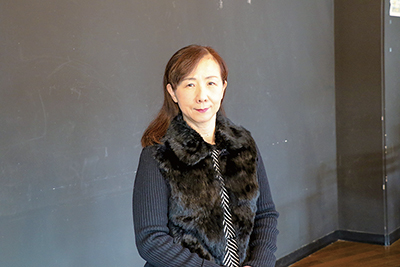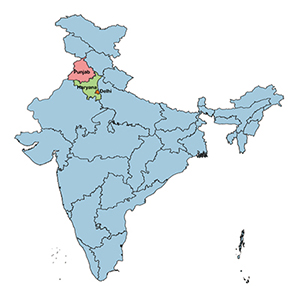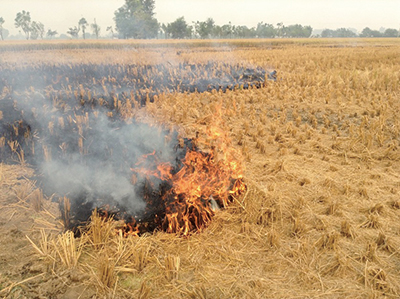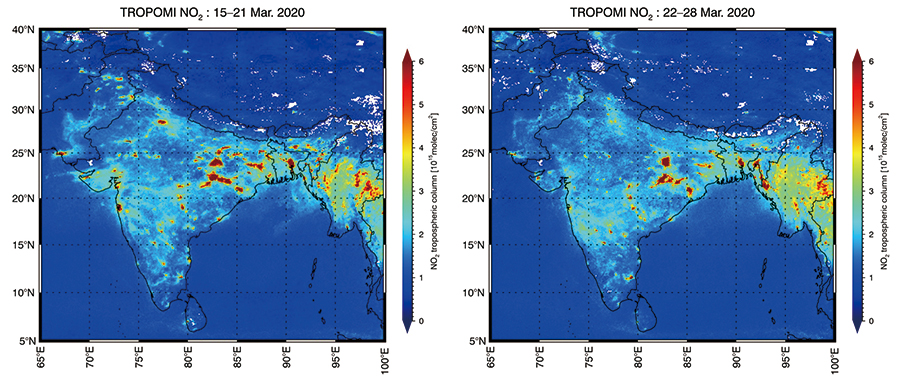An Interdisciplinary Study toward Clean Air, Public Health and Sustainable Agriculture: The Case of Crop Residue Burning in North India
- FS①
- PR
- FR①
- FR②
- FR③
- FR④
- FR⑤
2021
 Project Leader
Project LeaderHAYASHIDA Sachiko
RIHN/Nara Women’s UniversityDr. Sachiko Hayashida is an atmospheric scientist who has many achievements of research on stratospheric ozone depletion, air pollution and greenhouse gases. She received the Horiuchi Award from the Japan Meteorological Society in 2002. From 2005-2008 she was a member of the Science Steering Group of the Stratospheric Processes And their Role in Climate (SPARC) within the World Climate Research Programme (WCRP). From 2010-2018 she was a committee member of the International Commission on Atmospheric Chemistry and Global Pollution (iCACGP), a special commission within the International Association of Meteorology and Atmospheric Sciences (IAMAS). She is currently a president of the Remote Sensing Society Japan (RSSJ).
>> Annual Report>> Project's Page
| Sub Leader | |
| SUDO Shigeto | Institute for Agro-Environmental Sciences, The National Agriculture and Food Research Organization |
| Researchers at RIHN | |
| YASUTOMI Natsuko | Specially Appointed Associate Professor |
| MURAO Rumiko | Researcher |
| SINGH,Deepak | Researcher |
| SINGH,Tanbir | Researcher |
| CHOUDHURY, Begum Abida | Researcher |
| ARAKI Hikaru | Research Associate |
| Main Members | |
| ASADA Haruhisa | Nara Women’s University |
| PATRA, Prabir | Japan Agency for Marine-Earth Science and Technology |
| UEDA Kayo | Kyoto University |
Problem

Figure 1 Map of India with marks of the states of Punjab and Haryana.
This study addresses air pollution caused by large-scale post-harvest burning of rice-straw in October and November in the states of Punjab and Haryana in North-West India (Figure 1). The burning causes severe air pollution in the surrounding areas, most notably in the Delhi-National Capital Region. Some evidence suggests that crop-residue burning negatively aff ects air quality over the entire Indo-Gangetic Plain (IGP), demonstrating the potential negative impact of changing agricultural practices on regional air quality, aff ecting public health and wellbeing of hundreds of millions of people.
Background
Historically the Indian Punjab region, a semi-arid zone with low precipitation, was not suitable for intensive cultivation. Traditional agriculture in the region consisted of a combination of cultivating wheat and raising livestock (cattle). Development of irrigation canals during the British colonial period transformed the region into a granary. In the 1960s, the area became the seat of the so-called “Green Revolution”, and played a central role in producing food for the populous nation. In the 1970s, most of the region adopted a double-cropping system of wheat and rice. However, this cultivation practice required farmers to sow wheat seeds immediately aft er the rice harvest. While traditional hand-harvest allowed cropping of rice stalks near ground-level, recently increasing use of combine harvesters leaves large quantities of stubble in fiel. Farmers are forced to quickly burn this crop residue (stubble and stalk) in order to prepare for wheat seeding in the short period between late October and early November. Winds in this season shift to the northwest, often blowing smoke from stubble burning to Delhi-NCR, markedly aff ecting air quality there. Actually, however, the cause and effect relationship between stubble burning in the Punjab region and worsening air pollution in Delhi has not yet been established quantitatively. This lack of defi nitive quantitative evaluation is principally due to the poor state of the air pollution monitoring network in the region. Unfortunately, many farmers of the Punjab region are reluctant to acknowledge their own actions as the cause of air pollution in Delhi, and there is also some disagreement among academic researchers as well.
Project Structure & Research Plan
This project utilizes observational data and model simulations in order to provide a scientific examination of the connection between stubble burning in Punjab and severe air pollution in Delhi. Based on this scientific understanding, we will pursue a pathway of social transformation toward clean air, public health and sustainable agriculture. We will organize three working groups to approach stakeholders; all working groups will examine various measures to raise awareness regarding farmer/community behavior relevant to air pollution, as well as that of other stakeholders and government.
Project progress in 2020
Questionnaire survey in all districts in the state of
Punjab
We carried out the questionnaire survey in all 22 districts of the state of Punjab, under the contract with the Center for International Projects Trust (CIPT), a non-profit organization in India. Two villages per district and 50 households per village were selected, representing a total of 2,200 households. Surveys gathered information on household fi nancial status, agricultural practices, health awareness, and so on. Even in the midst of the spread of COVID-19, the CIPT was able to carry out surveys of all 2,200 households in FY2020. The questionnaire also included information on rice stubble burning. Because individual farmers may fear punishment for certain agricultural practices, in order to gain further information we also conducted direct interviews with village representatives.
Temporary improvements in air pollution in Delhi as a result of COVID-19 lockdown

A scene of burning rice straw captured in Ludhiana district, Punjab, on Nov. 2, 2018.
On March 25, 2020, a nationwide lockdown was implemented in India. As a result, the skies above Delhi-NCR, which has been cited as the most heavily-polluted city in the world, turned blue (See Aakash Newsletter: “Clean Air and Imagined Sustainability: The case of India”). An urgent and intensive research mission named “DELHIS (Detection of Emission change of air poLlutants: Human Impact Studies)” was therefore initiated on 1 April 2020, with the help of WG2 to investigate this abrupt change in air pollution. Semi-weekly meetings were held for four months, resulting in the publication of three peer-reviewed papers as of March 2021. Figure 2 shows the changes in the NO₂ concentrations observed by TROPOMI, during the periods of 15–21 March 2020 (before the lockdown: left ) and 22–28 March 2020 (aft er the lockdown: right). By comparing NO₂ concentrations before and aft er the lockdown, anthropogenic nitric dioxide (NO₂) emissions were also quantitatively estimated (Misra et al., 2021, Figure 3).

Figure 2 Nitrogen dioxide concentrations observed with satellite sensor (TROPOMI) just before lockdown (left) and after lockdown (right) in India.

Figure 3 Estimated NOx emission in 2020 during (a) BAU (business-as-usual), and subsequent lockdown-phase (Mar. 22-Apr.14). Emissions from urban areas with dense roads and buildings and from power plants are shown in red.
